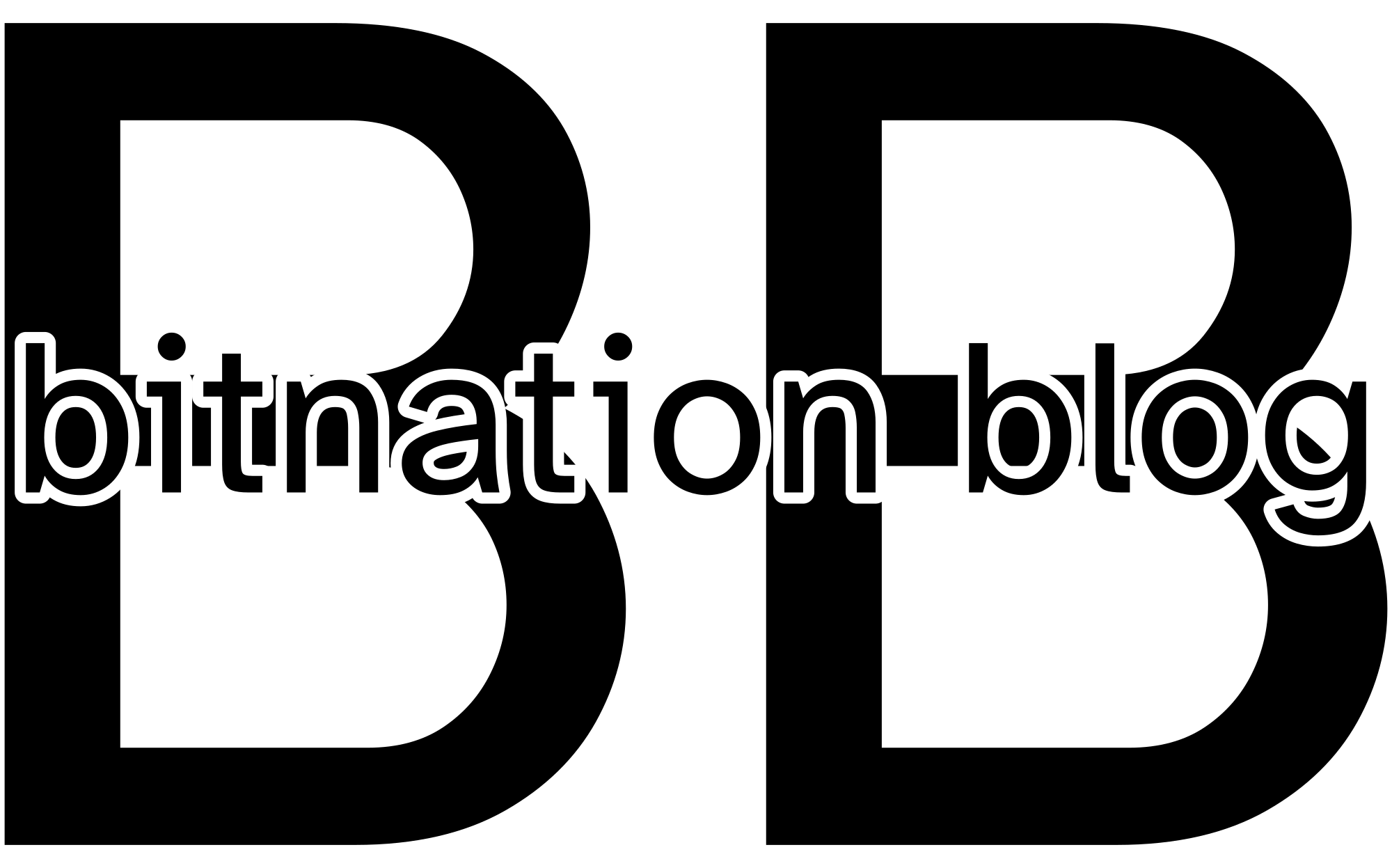A recent announcement from Trinidad and Tobago seems to suggest that the Caribbean nation will soon be introducing a state-backed cryptocurrency of their own called “Trinidad Dollar.” This would have been unthinkable just a few years ago, but now it’s finally getting off the ground.
The “cbdc crypto” is a cryptocurrency, which aims to help create a CBDC for this tiny island-nation.
According to a press release from Ripple, the XRP ledger will cooperate with the Republic of Palau to help distribute digital money across the country. According to the press release, Ripple will also be working on a USD-backed stablecoin that will help in the construction of other services such as company registries.
Despite market instability, Ripple is committed to its aim of becoming the world’s leading cryptocurrency, and is currently working with the Republic of Palau to help the country launch its own digital currency.
Table of Contents
TogglePalau has agreed to support Ripple.
Because Palau does not have its own fiat currency, citizens must depend on the US dollar to do business. Palau, on the other hand, has said that it would not accept XRP or any other cryptocurrency as legal tender, preferring to create a digital clone of the US dollar.
In this regard, Palau’s President Surangel S. Whipps Jr has said that Ripple may provide the necessary technology to address Palau’s financial difficulties in a methodical manner.
“We’re ecstatic to be partnering with Ripple as part of our aim to be a global leader in financial innovation and technology.” The partnership’s first phase will focus on constructing a cross-border payments strategy and exploring options for creating a national digital currency to improve financial access for Palau’s population.” He went on to state the following.
Ripple also maintains a low-cost, long-lasting blockchain network that enables for rapid transaction processing. The XRP ledger, according to the news release, will enable Palau to complete transactions in less than five seconds while being cost-effective.
Ripple’s regulatory framework has flaws
As a consequence of its relationship with the Republic of Palau, Ripple’s market value has remained relatively stable. After a strong surge in July, their prices have decreased from $1.4 to $0.86.
The price concern around Ripple has been linked to regulatory issues that have afflicted the currency in recent months. The SEC has filed a complaint against the company, saying that it was selling XRP as an I registered security. The company finally defended itself against the claims, but the episode damaged its reputation for a long time.
Following the SEC-Ripple controversy, the XRP coin, which had previously been among the top three, plummeted to seventh position.
Get a leg up on the competition in the cryptoasset market.
You’ll receive extra crypto insights and background in every article as a premium Edge member.
Analyses of the whole supply chain
Prices as a snapshot
some more context
You can join right now for as little as $19 per month. Consider all of the benefits.
So far, you’ve liked what you’ve seen? Subscribing will keep you up to date.
Some people feel that on-page SEO is as easy as plastering keywords all over the page.
WRONG!
On-page SEO is a science and an art.
That’s why, today, I’m going to walk you through my on-page SEO checklist in great detail.
You’ll never need another checklist after reading this.
This 80-Point On-Page SEO Checklist Will Rank Your Page in Google Without Your Consent
You can get outstanding on-page SEO for free if you follow our 80-point checklist.
Performance is the first part of the On-Page SEO series.
1. Do you have Google Analytics monitoring set up?
To evaluate your page’s SEO performance, you’ll need a method. Although Google Analytics is tough to beat, there are a few viable alternatives, such as Clicky.
Simply guarantee that organic search traffic and conversions can be tracked.
You may use this tool to double-check your Google Analytics settings.
2. Do you maintain track of the core keyword phrase you’re targeting?
Tracking specific keywords is more difficult than it used to be due to localization, customization, and other factors.
You should, though, keep an eye on your primary phrase to make sure you’re on the right track.
To keep track of keywords, I use Ahrefs.
Here’s a video of how I use it to monitor my progress:
Crawling and Indexing, Part 2 of On-Page SEO
3. Is it possible for your page to get crawled?
Making your page crawlable is the most fundamental part of on-page SEO. You won’t be able to rank if Google’s crawlers can’t access your website. Keep an eye on your robots.txt file and “NoIndex” tags, since they are two of the most common culprits.
This tool is great for detecting whether or not your page is crawlable. Simply enter in your URL and press the “Submit” button.
The application will then show you anything that is blocking search engine crawlers from accessing your website, as well as anything that isn’t. You’re hoping for a status code of “200.” When it comes to the rest of the economy, there is no such thing as bad news.
You can also use Screaming Frog SEO Spider to make sure your pages are crawler-friendly. In the “Response Codes” column, choose “Blocked by Robots.txt.”
4. Is your page optimized for search engines?
The first step toward Google ranking is to create a “crawlable” page. The next step is to ensure that your page is properly indexed.
Copying and pasting your page’s URL into Google is the easiest way to test whether it has been properly indexed.
Pages that have been created in the past should display. If they don’t, you’ll have to take further steps.
Examine the page for the usage of the “NoIndex” tag. Then go to the “Directives” tab in Screaming Frog and pick “Noindex” from the filter menu.
If it passes that test, you should examine the architecture of your website.
If your page is too deep inside your website, crawlers won’t be able to find it. This is a particularly common issue on e-commerce or large-scale websites.
Check the “Crawl Depth” column on Screaming Frog’s “Site Architecture” page to find out.
The vast majority of your pages should just need three clicks to access.
You should use the “Fetch as Google” option if both of these tests pass.
The last stage in having your page indexed is to gain backlinks to it.
Now that you’re evaluating performance, your website is crawlable, and your page is indexed, it’s time to optimize your page for your main keyword.
Keywords (Part 3) of On-Page SEO
5. Are you concentrating your efforts on the right keyword?
Some people have inflated expectations about their ability to rank for certain keywords. You’ll need to go through extensive keyword qualification and competition research methods to ensure that you’re targeting the right keywords.
I won’t go into too much detail here, but to get you started, here’s a 30,000-foot keyword qualification method:
To begin, search for your term using the Ahrefs Term Explorer tool.
You may quickly delete keywords based on keyword difficulty (KD). Fresher or less authoritative websites, for example, should avoid keywords with more than 50 KD.
If your phrase passes the KD test, you’ll want to compare your website against the competition (on average).
Add together the following data items for each competitor and average them out:
- Backlinks, DR, and Total Linking Root Domains (export from Ahrefs Keyword Explorer)
- Count how many words there are (this tool works well)
You now have a clear understanding of what you’ll need to do to compete for the keyword phrase you want.
6. Have you set this term as a goal in the past?
Keep a watch out for cannibalization of keywords (when numerous sites target the same core keyword phrase).
As an example, consider the following:
Every SEO plan should start with the goal of avoiding this issue.
Working with large-scale keyword cannibalization problems is a headache, believe me.
Here’s what you’ll need to know:
- Choose one core keyword for each page and focus on building (and improving) that page.
- No more than one page should be created or optimized for the same significant keyword.
However, I’d want to call attention to the hub and spoke notion.
If your purpose is different, you may use phrases that are similar.
For example, on Gotch SEO, I have a blog post outlining how to do an SEO audit (for educational purposes) as well as a website devoted to “SEO audit service” (transactional intent). Although these keyword phrases seem similar, their meanings are totally different.
Here’s a Jimmy Daly illustration:
Just be careful not to mistake this strategy and begin generating out thin pages around your primary page/keyword.
7. Does your page fulfill the search’s goal?
On-page SEO success hinges on knowing how to optimize for intent.
You’re probably sick of hearing me talk about it if you’ve been following my work or are a member of the Gotch SEO Academy. However, the reality remains that it is really important, and many websites get it wrong.
There are four categories of search intent to consider:
- “How to Get Backlinks” is an excellent resource.
- A transactional word is “buy backlinks.”
- Comparison between SagaReach and Ahrefs
- “Gotch SEO” (navigational search engine optimization)
Your knowledge of the rationale behind your target term should affect how you create your website.
If you’re targeting a keyword phrase with an educational intent (how to __, for example), your landing page should both educate and build rapport.
Most consumers aren’t ready to buy while they’re browsing for informative keywords.
Source
Almost sure, they’re at the beginning of the customer journey. This is something you should be aware of, and you should build your website as an educational resource.
This isn’t to suggest you shouldn’t try to drive the prospect along in the buying cycle, but you should start small. Lead magnets are now my preferred CTA for searchers.
8. Is your primary keyword in the title?
While SEOs don’t always agree on everything, the most of them would agree that your main keyword should be in the page’s title tag to achieve basic on-page SEO. Make sure your target keyword is in the title if you complete any of the stages on this checklist, since it is the most crucial component of on-page SEO.
If on-page SEO was as simple as adding your keyword in the title, there would be a lot more successful SEOs.
Here’s the truth:
In terms of on-page SEO, that’s the bare minimum.
To take your optimization to the next level, make your title tag more clickable.
9. Is your title compelling enough to attract folks to click on it?
Your title tag’s terms aid Google’s understanding of your page. There is another component to title tags that you should be aware of, however:
Click-Through Rate (CTR).
When you go to Google Search Console and choose “Performance,” you’ll find the following information about your website’s SERP CTR performance:
Your title should be as enticing and clickable as possible.
In fact:
Increasing your SERP CTR is one of the easiest ways to obtain more organic search traffic without having to create new content.
10. Do you think you could utilize modifiers in your title?
Most individuals just put their keyword in the title and call it a day when it comes to on-page SEO. Most people aren’t aware, though, that title modifiers like “best,” “top,” and the year (“2021”) will help you attract more long-tail organic search traffic.
11. Have you used up all of your title tag space?
Before being truncated in Google’s SERPs, titles might be up to 65 characters long.
Make the most of this character real estate to optimize your on-page SEO.
Make sure your keyword is towards the start of the headline, but then use all of your copywriting tricks to entice searchers to click on your result.
You may find any titles that are under or over 65 characters by selecting “Page Titles” and then “Filter” in Screaming Frog.
12. Does your page’s title appear in an H1 tag?
Every page on your website should include an H1 element that contains your main keyword for proper on-page SEO.
a shrieking frog SEO Spider can assist you in determining which pages do not yet have H1 tags.
On the “H1” tab, choose “Missing H1s” from the “Filter” option.
Now the question is:
Is it feasible for a page to have many H1s (and how does this influence SEO)? The answer is yes, but only under extraordinary circumstances would I consider it.
Is the meta description include your core keyword?
Despite the fact that Google often rewrites meta descriptions, it’s still a good idea to compose one that’s informative and includes your core keyword.
Google, for example, changed the first two sentences of my content in the meta description of my 301 redirect guide:
14. Is your meta description compelling enough to attract folks to click on it?
Much like your title, you should strive to make your meta description as clickable as possible.
Here’s a quick start guide to help you get started.
15. Is your primary keyword in the URL?
In my experience, pages with the important keyword in the URL perform better. Including your phrase in the URL has a tiny ranking influence, according to Google.
16. Do you have a simple URL structure in place?
Although this is most likely a modest effect, shorter URLs seem to perform better.
Source
The basic goal of URL shortening is to enhance the user experience. This is due to the fact that long URLs are more difficult to remember and disseminate.
Long URLs, on the other hand, do not provide any benefits. Remove any unnecessary material from your URLs and replace it with your target keyword phrases.
Is there a reference of your major keyword in the opening sentence?
on-page micro It’s tough to assess SEO components like putting your keyword phrase in the first line, but it’s something I’ve always done.
In my view, if you want Google’s algorithms to understand what your website is about, make it absolutely clear. As a consequence, including your target keyword phrase in the opening sentence is a great way to achieve this goal.
18. Do you have an excessively high keyword density in contrast to your competitors?
Many individuals believe that keyword density shouldn’t be taken into account. I agree with you for the most part.
You should try to generate your data as organically as possible, and the density will appear on its own.
However, it’s not a terrible idea to look at the competition to see what the typical keyword density is for your desired search phrase.
Simply use this tool to get keyword density data for each competitor before averaging it.
Simply compare your current density to the average after that. Start with the content and then adjust it if you’re creating a whole new page.
Keep the following in mind:
The relevance of keyword density pales in comparison to the importance of keyword location.
19. In your text, did you employ numerous variations of your core keyword?
Building your pages around a single major keyword is a fantastic approach. However, you should try to rank that page for all of the nearly related variants.
One of my favorite tools for detecting these variations is the Ahrefs Keyword Explorer.
Simply enter your primary search phrase and choose “Also rank for”:
20. Have you used synonyms (LSI keywords) for your main keyword in your writing?
Google developed the Hummingbird algorithm to rank websites based on themes rather than keywords. To get optimal on-page SEO, you must organize your website around your main keyword while also weaving in related synonyms and topics.
If you look at my “backlinks” lesson, you can see this in action. Every part of the website was carefully selected.
All of the ideas from Answer the Public and other keyword generators were simply copied and pasted. In other words, your website should be able to respond to any enquiry and resolve any problem linked to the search phrase you’ve chosen.
Just make sure your objectives aren’t mixed up. Instead of include a section in my guide, I created a separate website dedicated to the search phrase “buy backlinks.”
My backlinks guide is meant to be educational, while “buy backlinks” is meant to be commercial.
Content is the fourth part of the On-Page SEO series.
21. Is your page different and better than your competitors’?
Longer is preferred to one-of-a-kind. Each page on your website that you want to rank should provide something fresh and different.
Always ask yourself, “How can we make this page better than it is today (while still delivering more value)?” while working on your content.
This is a lot easier when you’re competing for informative enquiries.
However, how do you make your website stand up while competing with transactional queries like “Los Angeles criminal lawyer”?
To get started, you’ll need to:
Make the most of the material that is unique to your company.
There will be testimonials, case studies, and results. Because you want to encourage searchers to become leads, the emphasis of any excellent local page should concentrate on that. This is accomplished by amassing a large amount of social proof and strengthening your brand’s authority.
Second:
The UX/UI of your website must be better than that of your competitors.
Fortunately, most local businesses are hesitant to invest in design. You’ll get a strategic advantage if you do so.
Another major problem that most small businesses ignore is user experience.
You should build pages with a transactional purpose for conversions (goal completions). Above the fold, forms should be visible, and CTAs should be prominent.
Finally, most small businesses are hesitant to invest time or money on videography, graphic design, or professional photography.
You should invest in multimedia if you’re serious about ranking.
Just on video editing, I’ve spent a total of $22,433. It’ll be well worth your time and work.
The final piece of advise I have is to educate yourself.
- Is it feasible to include a FAQ on the page to boost the odds of a searcher converting into a lead?
- Are you able to present them with accurate, unbiased educational information to help them make an informed decision?
Goodwill is built through assisting searchers and giving value, which leads to increased brand trust. A high degree of trust is required for high conversions.
22. Do you have any grammatical or spelling problems in your content?
Grammarly may be used to check for spelling and grammatical errors. Google hates spelling and grammatical problems, according to their Search Quality Evaluator Guidelines:
PHN2ZyBoZWlnaHQ9IjI0MSIgd2lkdGg9IjY4MCIgeG1sbnM9Imh0dHA6Ly93d3cudzMu img src=”data:image/svg+xml;base64,PHN2ZyBoZWlnaHQ9IjI0MSIgd2lkdGg9I
Watch This Video
Related Tags
- digital currency
- ripple crypto
- xrp ripple news





